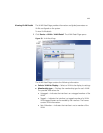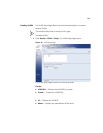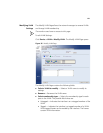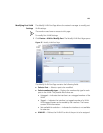8
CONFIGURING VLANS
VLANs are logical subgroups with a Local Area Network (LAN) which
combine user stations and network devices into a single unit, regardless
of the physical LAN segment to which they are attached. VLANs allow
network traffic to flow more efficiently within subgroups. VLANs use
software to reduce the amount of time it takes for network changes,
additions, and moves to be implemented. VLANs restrict traffic within the
VLAN.
VLANs have no minimum number of ports, and can be created per unit,
per device, or through any other logical connection combination, since
they are software-based and not defined by physical attributes.
VLANs function at Layer 2. Since VLANs isolate traffic within the VLAN, a
Layer 3 router working at a protocol level is required to allow traffic flow
between VLANs. Layer 3 routers identify segments and coordinate with
VLANs. VLANs are Broadcast and Multicast domains. Broadcast and
Multicast traffic is transmitted only in the VLAN in which the traffic is
generated.
VLAN tagging provides a method of transferring VLAN information
between VLAN groups. VLAN1is the default VLAN and always contains
untagged ports. All ports are members of VLAN1 by default. If the
untagged port is moved to a new VLAN, the port is removed from
VLAN1. For example: If an untagged port 24 is moved to VLAN 5. The
port will no longer be a member of VLAN1. However, if the port is added
to VLAN5 as a tagged port it then remains untagged in VLAN1.
This section contains the following topics:
■ Viewing VLAN Details
■ Viewing VLAN Port Details
■ Creating VLANs
■ Modifying VLAN Settings
■ Modifying Port VLAN Settings
■ Removing VLANs


















